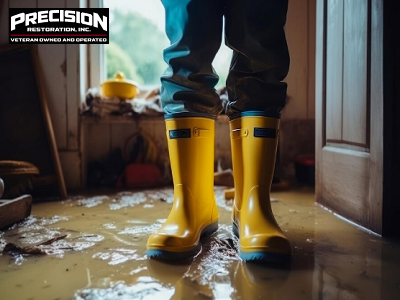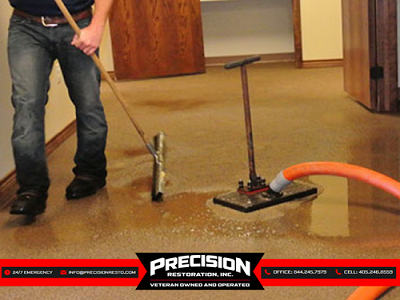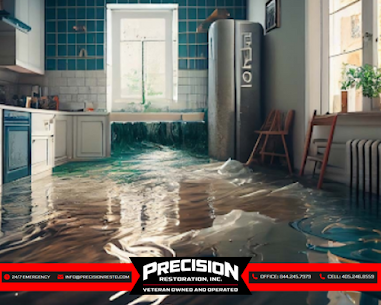Water damage is a common yet potentially devastating issue that homeowners can face. Whether it’s due to a burst pipe, a leaky roof, or a natural disaster, the aftermath of water damage can be extensive and stressful. One of the pressing questions that often arises during such situations is, “Is it safe to stay in my home while water damage restoration is underway?” In this comprehensive guide, we’ll explore the factors that determine the safety of staying in your home during restoration, what you can do to ensure your safety, and how to navigate the restoration process effectively.
Understanding Water Damage Restoration
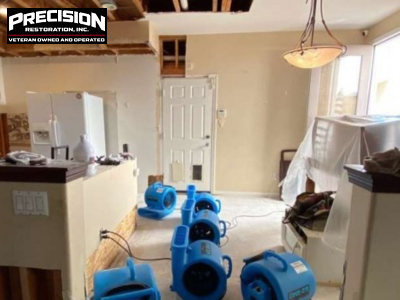
Water damage restoration is the process of repairing and restoring a property that has been affected by water damage. This typically involves several steps:
- Assessment: Identifying the extent of the damage and the source of the water.
- Water Extraction: Removing standing water using pumps and vacuums.
- Drying and Dehumidification: Using air movers and dehumidifiers to dry out the affected areas.
- Cleaning and Sanitizing: Disinfecting and cleaning surfaces to prevent mold and bacterial growth.
- Restoration and Repair: Rebuilding and repairing structural elements and finishes.
Factors Affecting the Safety of Staying in Your Home
Several factors influence whether it’s safe to remain in your home during water damage restoration. Let’s break them down:
Extent of Water Damage
The severity of the water damage is a primary factor in determining safety. If the damage is extensive, it might compromise the structural integrity of your home, making it unsafe to stay. For example, significant damage to the foundation or load-bearing walls could pose serious risks.
Contamination
Water damage can sometimes involve contaminated water, especially if the source is sewage or floodwater. This type of water can carry harmful pathogens and contaminants, making it unsafe to remain in the affected areas. Restoration professionals will test the water and determine the level of contamination to decide on appropriate safety measures.
Mold Growth
Mold can begin to grow within 24-48 hours of water damage. Mold spores can pose health risks, particularly to individuals with respiratory issues, allergies, or compromised immune systems. If mold growth is present or likely, staying in the home may not be advisable until remediation is complete.
Structural Damage
In some cases, water damage can lead to significant structural damage. Issues such as weakened floors, compromised ceilings, or damaged electrical systems could create hazardous conditions. A thorough inspection by a professional is necessary to assess the safety of the structure.
Electrical Hazards
Water and electricity don’t mix well. If there’s water damage near electrical systems, there’s a risk of electric shock or short circuits. It’s crucial to ensure that all electrical issues are addressed before reoccupying the home.
Ventilation and Air Quality
Proper ventilation and air quality are essential for a safe restoration process. Inadequate ventilation can exacerbate problems like mold growth and affect indoor air quality. Restoration professionals will use specialized equipment to ensure that the air quality remains safe throughout the process.
Steps to Ensure Safety During Water Damage Restoration
If you’re considering staying in your home during restoration, there are several precautions you can take to ensure your safety:
- Consult with Professionals: Always consult with a certified water damage restoration professional before making decisions about staying in your home. They can provide a thorough assessment of the damage and offer guidance on safety measures.
- Follow Safety Recommendations: Adhere to all safety recommendations provided by the restoration team. This may include avoiding certain areas of the home, using protective gear, or temporarily relocating to another part of the house.
- Monitor Air Quality: Ensure that the restoration team is using equipment to monitor and maintain good air quality. Poor air quality can exacerbate health issues, so it’s important to address any concerns immediately.
- Address Electrical Issues: Have a licensed electrician inspect your home to ensure that there are no electrical hazards. Water damage can cause serious electrical issues that need to be resolved before the home can be considered safe.
- Inspect for Mold: Keep an eye out for signs of mold growth and notify the restoration team immediately if you suspect mold. Mold can spread quickly and pose significant health risks.
How to Ensure Your Home Is Safe During Water Damage Restoration
Ensuring your home’s safety during water damage restoration involves several critical steps. First, consult with certified water damage professionals who can assess the extent of the damage and recommend appropriate measures. Follow their guidance on any temporary evacuations or safety precautions. Make sure the restoration team uses specialized equipment to monitor air quality and manage humidity levels, as poor air quality can exacerbate health issues. Address electrical concerns promptly by having a licensed electrician inspect and repair any water-damaged wiring. Lastly, keep an eye out for mold growth, which can develop quickly. If mold is detected, follow protocols for safe removal to prevent health risks.
Understanding the Risks of Staying in Your Home During Water Damage Restoration
Staying in your home during water damage restoration involves certain risks that need to be managed carefully. Water damage can compromise structural elements, making parts of your home unsafe. Contaminated water, such as sewage or floodwater, can pose health hazards due to harmful pathogens. Mold growth is another concern; it can develop within 24-48 hours and lead to respiratory issues or allergic reactions.
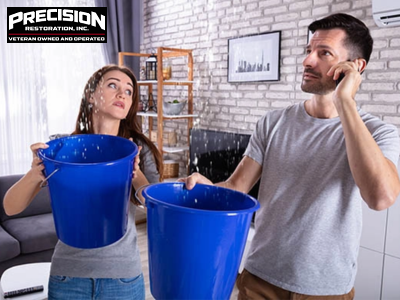
Additionally, electrical systems exposed to water may present shock or fire risks. It’s essential to assess these risks with professionals and follow their advice. If safety concerns arise, consider temporary relocation to protect your health and well-being during the restoration process.
What You Need to Know About Water Damage Restoration and Home Safety
Water damage restoration is a multifaceted process that requires careful attention to ensure home safety. The restoration process involves assessing the damage, extracting water, drying and dehumidifying, cleaning, and repairing. During this time, it’s crucial to work with certified professionals who can identify risks such as structural weaknesses, mold growth, and electrical hazards. Air quality should be monitored and managed to prevent health issues. If contamination is a factor, special precautions must be taken to ensure the area is safe. In some cases, temporary relocation might be necessary to avoid exposure to unsafe conditions. Understanding these aspects will help you navigate the restoration process effectively and protect your home and health.
Conclusion
Water damage restoration is essential for maintaining a safe and healthy living environment. While it might be tempting to stay in your home during the restoration process, it’s crucial to prioritize safety above all else. Water damage can lead to structural issues, mold growth, and electrical hazards, which may not always be immediately visible. By seeking professional help, you ensure that the restoration is thorough and that your home is safe to inhabit.
At Precision Restoration, Inc., we understand the complexities of water damage and the importance of a swift and effective response. Our team in Oklahoma City is dedicated to restoring your home to its pre-damage condition while prioritizing your safety and well-being. Trust us to handle your restoration needs with the expertise and care that you deserve.

